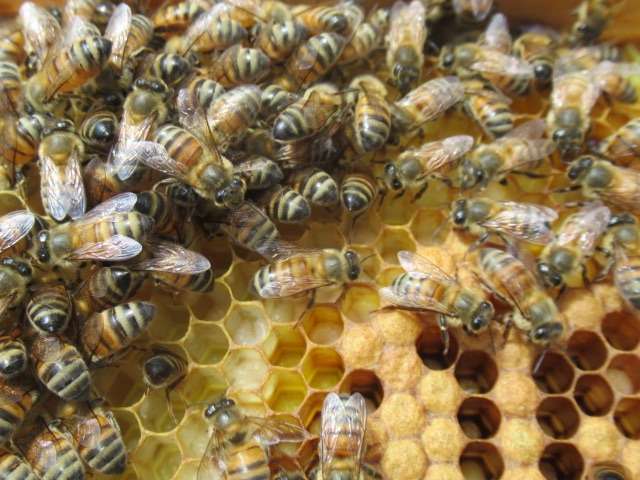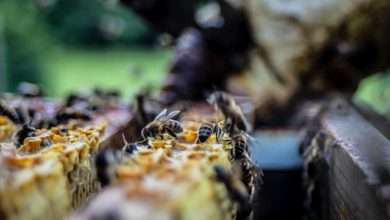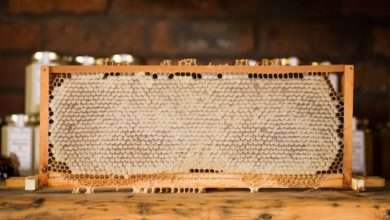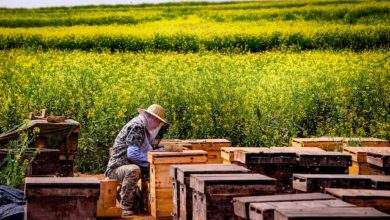What is Bee Bread?

What is Bee Bread?
Bee Bread is a honeycomb made of honey collected by bees from the nectar of plants and flowers. In this article, learn more about what Bee Bread is, how it is made and why it is a necessary ingredient for beekeeping.
Beekeeping is an activity that has been around since ancient times and it is still popular today.
Beekeepers strive to raise and maintain healthy colonies of honey bees in order to produce honey, beeswax, propolis and other beneficial products.
Every beekeeper should understand and properly manage bees in order to obtain the best result from their efforts. One of the most important ingredients used in beekeeping is bee bread.
What is the Purpose of Bee Bread?
In beekeeping, bee bread is used to provide nutrition to the bee colony, promote their health and prosperity. Bee bread is considered to be a crucial ingredient in bee health and beekeeping. The honeycomb helps the bees collect and store nectar which is then used in their diet for food and nutrition.
How is Bee Bread Made?
The process of making bee bread is quite simple. First, the bees collect and store the nectar in their honeycombs. When the nectar is stored, the bees add enzymes and other components to it, which helps preserve the sweet liquid and give it the distinctive aroma and flavor that it has. The nectar is then left to ferment and thicken until it forms a thick, dough-like substance which is then shaped into thin round discs. The discs are dried and then stored in the honeycomb as bee bread.
What are the Benefits of Bee Bread?

Bee bread is a necessary ingredient for bee health and beekeeping. By storing and preserving the nectar, bee bread provides the bees with a steady supply of vital nutrients, including carbohydrates, proteins and minerals. The bees use the bee bread to supplement their diet and obtain the nutrients they need to function and thrive.
In addition, bee bread also helps improve the taste of the honey produced by the bees. The enzymes in the bee bread break down the sugars found in the nectar, transforming them into sweeter sugars, thus giving the honey a unique flavor.
Why Honey Bees Cannot Eat Fresh Pollen
As a beekeeper, it may seem counterintuitive to think that honey bees cannot directly consume fresh pollen. However, this is a fact that every beekeeper should understand.
– Fresh Pollen Is Too Wet
Fresh pollen grains are too wet for honey bees to eat. The water content of fresh pollen is typically above 40%, which makes it too moist for the bees to process. Bees cannot digest wet pollen because it creates fermentation and mold growth. This leads to gut infections that can weaken the bees and the colony.
– Pollen Must Be Fermented Before Consumption
To combat the moisture content found in fresh pollen, bees must first ferment it before consuming it. Fermenting pollen reduces the moisture content, allowing for easier digestion. During fermentation, bees use enzymes to break down complex proteins and other nutrients in the pollen. Once this process is complete, the pollen becomes a more manageable substance for bees to eat.
– Good Pollen Storage Is Essential for Bees
It’s essential for bees to store fermented pollen in adequate amounts for their survival. As pollen is a primary source of protein, it’s vital for brood production in the hive. Bees use fermented pollen to feed the brood, ensuring their healthy development. Hence, a colony with insufficient pollen stores is likely to suffer from bee mortality.
– Beekeepers Should Avoid Feeding Fresh Pollen
Beekeepers should avoid feeding fresh pollen directly to honey bees. Instead, they should provide an adequate amount of fermented pollen to the colony. Beekeepers can do this by planting a diverse range of pollen sources to stimulate the bees’ natural foraging behavior. They can also use pollen substitute diets and bee feeders to supplement the bees’ diet during periods of low pollen availability.
Nutritional Benefits of Bee Bread

Bee bread is not only essential for bees, it’s also highly nutritious for humans as well.
Bee bread is rich in vitamins, minerals, and antioxidants. It contains high amounts of protein, amino acids, essential fatty acids, and carbohydrates. It also contains a variety of vitamins such as B-complex, C, D, and E. Other nutrients in bee bread include calcium, magnesium, iron, and zinc. These nutritional benefits make bee bread a popular dietary supplement.
How Do You Harvest Bee Bread?
Harvesting bee bread is a great way to benefit from the nutritious food made by honeybees. As a beekeeper, you can either harvest bee bread for yourself or as an additional product to sell.
Bee bread harvesting is a simple process that can be easily integrated into your beekeeping routine. By taking advantage of the health benefits of bee bread, you’re not only providing your body with essential nutrients but also supporting the health and well-being of your bees!
Here’s a step-by-step guide:
Step 1: Find the Bee Bread
The first step is to locate the bee bread in the hive. Open the hive and inspect the frames for pollen stores. Bee bread is typically stored in oval-shaped cells on the outer edges of the brood frames.
Step 2: Use a Bee Brush
To avoid disturbing the bees, it is recommended to use a bee brush to gently brush the pollen off the cells. Be sure to use a light touch as not to damage the cells or the brood.
Step 3: Collect the Bee Bread
Collect the bee bread by scraping the pollen from the cells with a small spoon or spatula. It is important to choose a tool with a small enough head to avoid damaging the cells.
Step 4: Store the Bee Bread
Once you have collected the bee bread, store it in an airtight container that is kept at room temperature, away from direct sunlight. Bee bread will retain its nutritional value for up to two years if stored properly.
Conclusion
Bee bread is an essential ingredient used in beekeeping for providing nutrition to the bee colony and for improving the taste of honey produced. It is made from honeycomb filled with honey collected from the nectar of plants and flowers and is stored in the honeycomb as bee bread.
Bee bread is a necessary ingredient for bee health and beekeeping, providing the bees with important carbohydrates, proteins and minerals for them to thrive. Bee bread can, however, have drawbacks, such as taking up a lot of energy and resources and creating a strong odor.
FAQ
Is Bee Bread Safe to Eat?

For most people, bee bread is safe to eat. However, people who are allergic to pollen or honey may experience an allergic reaction after consuming bee bread. Symptoms of an allergic reaction may include itching, hives, swelling, and difficulty breathing. People who are allergic to pollen or honey should avoid consuming bee bread.
There is also a risk of contamination with bee bread. Bees may collect pollen from plants that have been sprayed with pesticides, which can be harmful to humans. Therefore, it is important to purchase bee bread from a reputable source that tests for contaminants.
What is the difference between bee bread and bee pollen?
Both bee bread and bee pollen are incredibly nutritious and valuable to human health, but they are not the same thing. Bee bread is created by the bees themselves, while bee pollen is collected from flowers.
What does bee bread taste like? Bee bread has a sweet and tangy taste with floral undertones and a nutty flavor. Its texture is chewy and sticky, and it provides a wide range of health benefits. Whether you’re a beekeeper, a health enthusiast, or simply curious about unique foods, bee bread is definitely worth trying.




